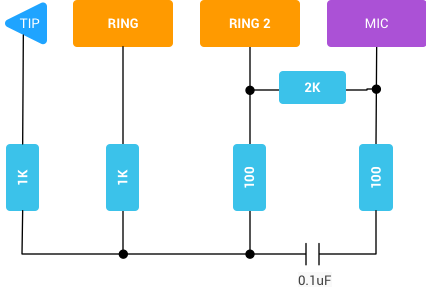
- #How to create audio loopback connection how to#
- #How to create audio loopback connection software#
- #How to create audio loopback connection mac#
Select a load balancing method to load balance traffic between the web servers. Select Create reflexive rule to create a source NAT rule that translates traffic from the web servers.

Use 2 separate buffers, and copy bytes from the input buffer into the output buffer. Then, call seek () in readData () and writeData () to set pos () - point to the end of the data before writing, but point to the middle of the data before reading.
#How to create audio loopback connection software#
In M$ world (which I'm so glad to be out of) I would have installed an M$ loopback adaptor which would appear as another network interface which software like Virtualbox could see. Select Create loopback rule to translate traffic from internal users to the internal web servers. 2 solutions: Implement your own, separate read-position and write-position trackers.
#How to create audio loopback connection mac#
I need to be able to connect between the Mac and VM even when I am not attached to any real networks. If I create a new ethernet adaptor, call it LoopbackAdaptor and give it a static address, I can bind Virtualbox VM to it and then ping between the Mac and VM, but only when there is a real ethernet connection. This works but only when the parent adaptor is connected. In the example above, I have created an Input that combines my Macs microphone (the usual Input) with the output of the Apple Music app, something I might want to use to play a recording example for my students in a Google Meet. In other words, the left and right channels are combined and fed into the microphone circuit. Tip is left channel output, ring is right channel output, ring 2 is ground, and mic is the microphone voltage. Create a new adaptor in Network Prefs with the static address. Loopback allows you to create Inputs and Outputs that are accessible to your Macs Sound settings as well as your apps. The resistor loads tell the microphone polarity switch that the audio loopback dongle is a US/CTIA pinout Tip Ring Ring Shield (TRRS) plug. Set the ethernet/airport addresses manually to a.b.c.d+1 - this is a non starter as I still want to be able to connect to the internet using my ethernet/airport adaptors.Ģ. If you have ADAT you can do the same for 8 channels of loopback. You can create a virtual audio interface and mix in mics, program audio, and control the channels it produces. If you have SPDIF input and output ports, connect a cable between them for stereo loopback. Pactl load-module module-loopback atform-sndaloop sinkalsaoutput.

I've confirmed these operations by entering the following commands to the terminal(Device names are some omitted): sudo modprobe snd-aloop pcmsubstreams2. The only ways I've managed to get the host to be able to ping the VM are:ġ. LoopBack is a Mac software virtual mixer and likely can completely solve the issue if configured correctly. I want to create a virtual audio device and connect it to a real speaker when the OS starts up.
#How to create audio loopback connection how to#
I know OSX has a loopback interface and I can add a new address to that (using ifconfig lo0 alias a.b.c.d+1) but the lo0 interface doesn't appear in the list within Virtualbox UI. In this short video I have shown you how to loop your audio file or background music file in any video. I can setup the Virtualbox VM in bridged mode and specify one of my adaptors for it to bind to and the options I have are Airport and Ethernet. Arm an audio track for recording, then set the monitor to receive the correct input: Start recording into a blank clip slot, and press play on the Youtube video. Select iShowU Audio Capture as the input device: Rename the input as required. The VM has a fixed IP address of a.b.c.d/24 which has to remain, due to the software loaded on it. Set the Output device to iShowU Audio Capture: Launch Live, then open Preferences Audio. I need to be able to ping from the Mac host to the Virtualbox VM.

Loopback makes it easier to create and control sets of devices to feed into Audio. This is the concept of virtualy routing the audio out from your computer directly to a destination without needing any cables or additional hardware. I am trying to create a loopback adaptor to bind a Sun Virtualbox virtual machine to. Audio Hijack includes recording and effect options, and is aimed more at a front-to-back audio-capture process.


 0 kommentar(er)
0 kommentar(er)
